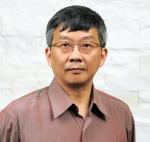Research
Materials Simulation Using Random Structure Searching (RSS) Method
For the interpretation of the experimental measured data or the simulation of theoretical modeling calculations, to predict or understand the atoms’ arrangements in a variety of emergent materials within the composition is an important first step to explore the materials’ nature. As is well known, however, most of the structure and composition of materials are quite complex, and thus via experimental methods (such as X-ray, TEM, STM) to resolve the atomic arrangement of the composition therein is often very difficult. In recent years, the use of density functional theory combined with various initial structure searching methods to find and predict the minimum energy crystal structures gradually become the main direction of research scholars conducted; one of them: "Ab-Initio Random Structure Searching"(C. J. Pickard and R. J. Needs, J. Phys.: Condens. Matter 23, 053201 (2011)), by setting the appropriate and reasonable restrictions and the usage of random number to generated initial atomic structures in the application has gained quite amazing achievements in the solid state high-pressure structural prediction. We aim to develop and apply this random structure searching method to predict the structure of the material. We hope to get the correct atomic structural components of various materials and provide these important messages to the experiment scholars for their references and provide a new direction for the relevant or interested theorists in predicting "the unknown crystal structure”.
Application of Quantum Monte Carlo Methods in Surface Catalyst Reactions
Density functional theory (DFT) is one of the most commonly used theoretical methods for real material calculation. However, the accuracy and reliability of the choice of exchange-correlation (XC) functional approximation used in DFT studies need to be checked and verified systematically. The purposes of our project are, using Quantum Monte-Carlo methods, to systematically study the surface catalyst (especially on transition metal surfaces and metal-oxide surfaces) and examine the accuracy of various XC functionals within DFT. The QMC methods are based on random walk sampling and provide an exact description of the electron-electron and electron-ion interaction. We expect that the QMC calculation can significantly improve the drawbacks of DFT approximated XC energy and thus will obtain a more accurate adsorption energy.

